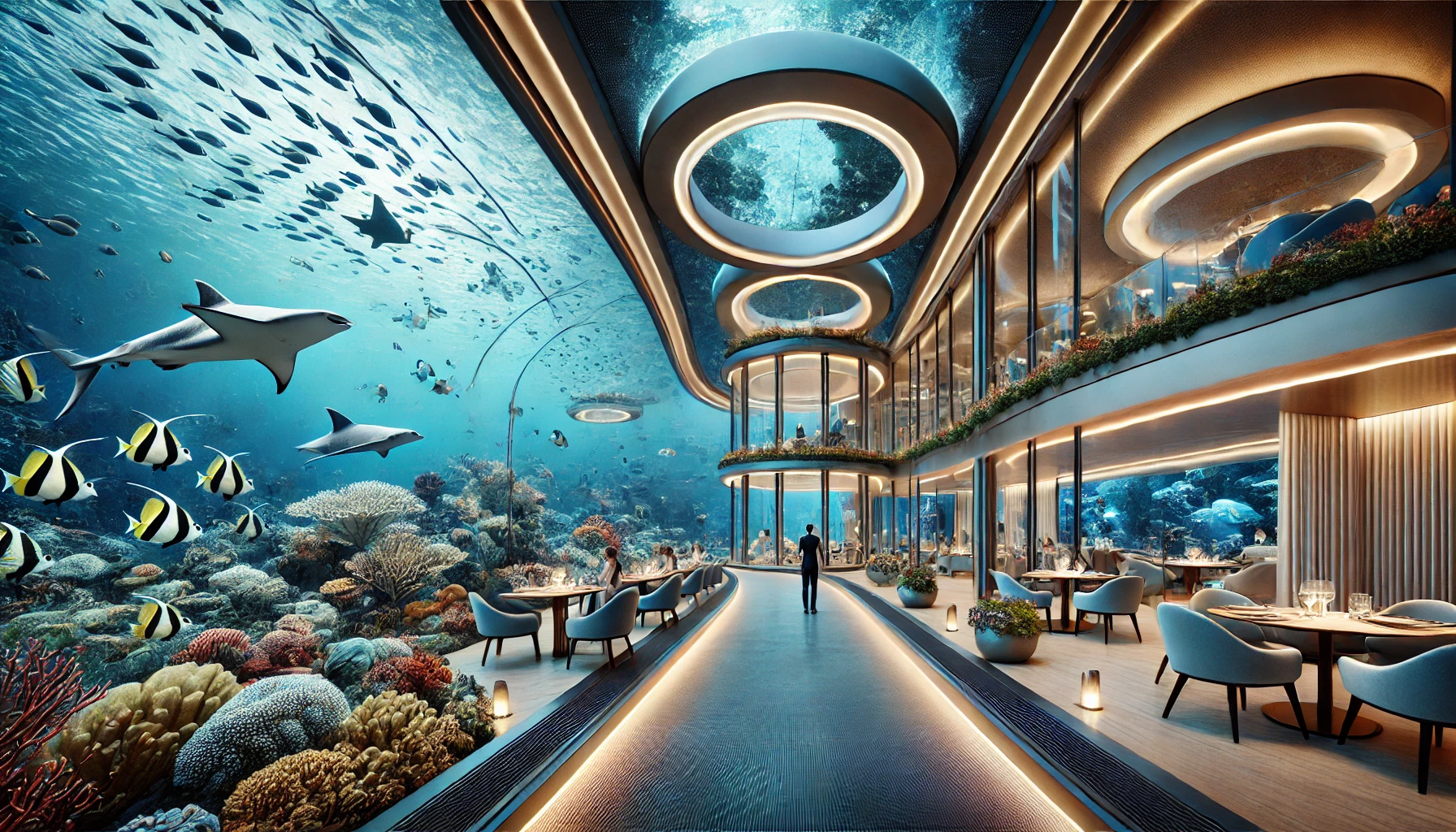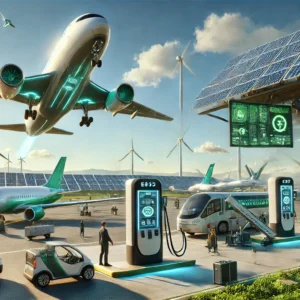
Imagine diving into a world where luxury meets the deep blue—where your holiday suite is submerged beneath shimmering waves, offering panoramic views of marine life and surreal underwater landscapes. Luxury undersea resorts are emerging as the pinnacle of futuristic travel, promising an exclusive escape into oceanic wonderlands in exotic locations. In 2025, these underwater retreats are poised to revolutionize the tourism industry, combining cutting-edge technology, sustainable design, and unmatched opulence to deliver an unforgettable experience.
The Allure of Underwater Holidays
Travel enthusiasts and adventurers alike are captivated by the idea of staying beneath the waves. Unlike traditional beach resorts, undersea hotels provide an intimate encounter with the mysteries of the deep. Imagine waking up to a kaleidoscope of coral reefs or witnessing schools of colorful fish glide past your window—these experiences create a mesmerizing backdrop that redefines luxury travel.
This concept goes far beyond a novelty; it symbolizes the future of immersive tourism. With advancements in underwater architecture and life-support systems, designers are crafting environments that are as safe and comfortable as they are enchanting. Modern undersea resorts integrate state-of-the-art pressure regulation, energy-efficient systems, and robust emergency protocols, ensuring that guests enjoy both beauty and security.
Government Initiatives and Regulatory Frameworks
Governments worldwide are increasingly recognizing the potential of underwater tourism and its economic, environmental, and scientific benefits. Several nations are already setting the stage for the commercial deployment of undersea resorts through strategic policies and investments.
For instance, the government of the Maldives—a nation renowned for its pristine marine environments—has recently announced initiatives to boost eco-friendly underwater tourism. By offering tax incentives and streamlined licensing procedures, the Maldivian authorities aim to transform their islands into hubs for luxury undersea experiences while preserving delicate coral ecosystems.
Similarly, coastal regions in Australia and the Caribbean are exploring public–private partnerships to develop sustainable underwater habitats. In the United States, maritime agencies and tourism boards are collaborating to update safety regulations and environmental standards for underwater constructions. These government-led efforts not only foster innovation but also ensure that these projects meet strict safety, ecological, and operational benchmarks.
For more details on governmental policies, check resources such as the Maldives Ministry of Tourism and Australian Maritime Safety Authority.
Political Perspectives and Global Debates
The rise of undersea resorts has sparked dynamic debates on the political stage. Elected officials and policy experts discuss the balance between economic growth and environmental stewardship. Proponents argue that these projects can create significant revenue streams, boost local economies, and generate global interest in sustainable tourism. Critics, however, caution that without rigorous oversight, the development of underwater resorts could lead to ecological degradation and exacerbate socioeconomic disparities.
In recent legislative sessions, members of parliament in the Caribbean and Southeast Asia have deliberated over the merits and challenges of undersea tourism. While some see it as a vehicle for modernization and international prestige, others call for stringent environmental regulations to safeguard marine biodiversity. These discussions underscore the need for balanced policies that promote innovation while protecting our natural heritage.
Research Labs and Scientific Breakthroughs
At the forefront of underwater architectural innovation are research labs and pioneering scientists dedicated to making undersea resorts not only a luxurious reality but also a sustainable one. Academic institutions and private research organizations are developing new materials and engineering techniques to withstand high-pressure underwater environments without compromising on design or guest comfort.
A recent breakthrough from a joint research initiative between institutions in Japan and Norway demonstrated advanced corrosion-resistant alloys and pressure-adaptive glass. These materials are crucial for constructing resilient underwater habitats, ensuring that luxury suites remain both transparent and secure. Detailed research on these developments can be found in publications like Marine Structures Journal.
Furthermore, scientists are working on energy-efficient underwater systems that leverage renewable sources such as tidal and wave energy. These innovations aim to reduce the environmental footprint of undersea resorts, making them not only a marvel of modern engineering but also a model for sustainable tourism. Collaborative efforts in Europe and North America are already underway to test these systems in controlled environments before commercial deployment.
Celebrity Endorsements and Influencer Buzz
High-profile celebrities, sports icons, and influential business leaders have begun to endorse the concept of luxury undersea resorts, adding an extra layer of glamour and excitement to the trend. A well-known international actor recently described his dream of spending a vacation in an underwater palace as “a surreal blend of adventure and luxury, where you feel at one with the ocean.” Top sports figures, meanwhile, have hinted at their plans to explore underwater resorts as part of their off-season getaways, praising the novelty and exclusivity of the experience.
Business magnates are also weighing in. Tech entrepreneurs and hospitality tycoons see undersea resorts as the next frontier in luxury travel—a market segment that could generate billions in revenue. Their optimistic forecasts, shared in interviews on platforms like Forbes and Bloomberg, underscore the enormous financial potential of transforming oceanic spaces into high-end tourist destinations.
Intergenerational Insights: Bridging Tradition and Innovation
Wisdom from Older Generations
For many older adults, the notion of undersea resorts evokes memories of early ocean exploration and the romance of maritime adventures. These individuals often reminisce about the excitement of past sea voyages while expressing cautious optimism about modern underwater innovations. They value the historical context of maritime travel and appreciate the technological advancements that make underwater resorts safe and sustainable. However, they also emphasize the need for meticulous safety measures and environmental preservation—a sentiment rooted in decades of experience with both traditional and modern travel.
Youthful Enthusiasm and Digital Natives
Conversely, younger generations are quick to embrace the futuristic allure of undersea resorts. Digital natives, who have grown up with rapid technological advancements and social media, are particularly excited about sharing the novelty of underwater vacations with their peers. For them, a stay at a luxury undersea resort is not just a holiday—it’s a status symbol and a once-in-a-lifetime experience to be broadcasted across platforms like Instagram and TikTok. Their enthusiasm is driving demand and inspiring innovation, as companies race to cater to this tech-savvy demographic.
Social and Cultural Implications
The advent of luxury undersea resorts is set to reshape societal perceptions of travel and leisure. These experiences offer more than just opulent accommodations—they provide a transformative encounter with nature. Guests will have the unique opportunity to observe marine ecosystems up close, fostering a deeper appreciation for ocean conservation and environmental sustainability.
On a cultural level, undersea resorts symbolize a bold step into the future, merging luxury with ecological awareness. They serve as a testament to human ingenuity, demonstrating that with the right technology and vision, even the most extreme environments can be harnessed for enjoyment and education. However, this transformation also prompts questions about accessibility and social equity. While the initial market may cater to affluent travelers, there is hope that advancements in technology and economies of scale will eventually democratize access to these unique experiences.
Global Business, Revenue, and Market Trends
The economic potential of luxury undersea resorts is immense, with forecasts indicating that the sector could generate billions in revenue over the next decade. As governments, private investors, and tourism boards converge on the opportunity, several key economic drivers are emerging:
- Investment Surge: Global venture capital and private equity firms are investing heavily in innovative underwater tourism projects. With initial funding rounds already surpassing hundreds of millions, the market is poised for explosive growth.
- Revenue Projections: Analysts predict that the luxury undersea tourism market could reach a valuation of over $20 billion by 2030. This growth is fueled by high-end packages, exclusive experiences, and additional services such as underwater excursions and marine research collaborations.
- Job Creation: The development of undersea resorts will create diverse employment opportunities—from underwater engineers and hospitality professionals to marine biologists and environmental experts.
- Economic Hubs: Regions with extensive coastlines and rich marine biodiversity, such as the Caribbean, Southeast Asia, and parts of the Mediterranean, are emerging as prime locations for these projects. Strategic investments in these areas are expected to bolster local economies and attract international tourists.
For a deeper dive into market trends and revenue forecasts, refer to reports from McKinsey & Company and Deloitte’s Tourism Insights.
Key Milestones and Future Timelines
The journey toward establishing luxury undersea resorts is punctuated by several significant milestones that mark the evolution of this pioneering industry:
- 2022-2023: Early-stage prototypes and feasibility studies conducted in collaboration with research institutions and private companies laid the groundwork for sustainable underwater construction.
- 2024: Pilot projects in select exotic locations, such as the Maldives and the Bahamas, are expected to unveil initial operational models. Government-backed grants and international partnerships are pivotal during this phase.
- 2025: A breakthrough year for the industry as the first fully operational luxury undersea resorts open their doors to tourists. This period is marked by major public unveilings, extensive media coverage, and high-profile endorsements.
- 2030 and Beyond: As technology matures and operational efficiencies improve, undersea resorts are projected to become a mainstream travel option, with a global network of underwater destinations spanning multiple continents.
These milestones are supported by industry analyses, government announcements, and academic studies, ensuring a well-founded roadmap for the future of underwater tourism.
The Technology Behind Undersea Resorts
Advanced Underwater Construction
The creation of a luxury undersea resort is a marvel of modern engineering. Innovative construction techniques allow structures to withstand immense underwater pressure while remaining energy-efficient and aesthetically stunning. Materials such as reinforced glass and corrosion-resistant alloys are key to ensuring the longevity and safety of these habitats. Researchers are continuously refining these materials to maximize both durability and visual appeal.
Life-Support and Sustainability Systems
Ensuring a comfortable stay under the sea requires sophisticated life-support systems. These resorts incorporate closed-loop water and air recycling systems, renewable energy sources like wave and tidal power, and advanced waste management protocols. The goal is to minimize the environmental impact while offering guests an immersive, sustainable experience. Research from institutions like MIT’s Sea Grant highlights the ongoing efforts to innovate in these critical areas.
Communication and Safety Technologies
Modern undersea resorts are equipped with robust communication networks that link the underwater habitat to the surface. These systems, which often integrate satellite and fiber-optic technologies, ensure that guests remain connected with the outside world. Additionally, state-of-the-art safety features—including emergency evacuation routes, real-time monitoring sensors, and advanced navigation systems—are essential for ensuring guest security in the challenging underwater environment.
Real-World Experiences: What to Expect
Immersive Luxury and Unforgettable Views
Staying at a luxury undersea resort offers a sensory feast unlike any other. Guests can marvel at the vibrant marine life through expansive observation windows, dine in gourmet restaurants with oceanic vistas, and even participate in guided underwater excursions. The blend of luxury and nature creates an environment that is both relaxing and exhilarating, inviting travelers to disconnect from the mundane and reconnect with the mysteries of the ocean.
Exclusive Amenities and Unique Activities
These resorts are designed to offer a wide range of exclusive amenities, including spa treatments using marine-derived ingredients, underwater art installations, and immersive virtual reality experiences that simulate life above the waves. Unique activities such as scuba diving, submarine tours, and even underwater yoga sessions are often part of the package, ensuring that every guest finds something that piques their interest.
Scientific and Environmental Engagement
For those curious about marine life and conservation, many undersea resorts offer opportunities to engage with ongoing research projects. Guests can participate in citizen science initiatives, learn about local ecosystems from onboard marine biologists, and even contribute to coral reef restoration programs. This integration of tourism with environmental stewardship not only enriches the guest experience but also fosters a deeper understanding of ocean conservation.
Voices from Diverse Perspectives
Celebrity Endorsements and Business Visionaries
High-profile figures have been quick to share their excitement about the future of undersea tourism. Celebrities and influencers on social media frequently post about the allure of underwater vacations, often highlighting the novelty and exclusivity of the experience. Business leaders see a tremendous opportunity in this market—one that promises to merge luxury travel with breakthrough technology and sustainable practices.
Older Generations: Cautious Optimism
For many seniors, the idea of an underwater holiday evokes both nostalgia and wonder. Those who lived through the early days of ocean exploration appreciate the romance of the sea and view modern undersea resorts as a beautiful evolution of past adventures. They emphasize the importance of safety and environmental responsibility, advocating for strict regulations and robust emergency systems to protect guests and preserve marine ecosystems.
Youthful Excitement and Digital Trends
Young travelers, on the other hand, are driving the trend with their insatiable appetite for novel experiences. Social media buzz and digital storytelling play a crucial role in popularizing undersea resorts among Millennials and Gen Z. For these digital natives, an underwater holiday is the ultimate blend of adventure, technology, and Instagram-worthy moments. Their enthusiasm is not only pushing demand higher but also encouraging continuous innovation in resort design and guest services.
Social, Cultural, and Environmental Impact
The emergence of luxury undersea resorts is reshaping our cultural landscape in profound ways. These projects highlight humanity’s ongoing quest to explore and innovate while also underscoring our responsibility to protect the natural world.
- Cultural Enrichment: Undersea resorts offer a unique blend of luxury and nature, inviting guests to appreciate the beauty of marine ecosystems while enjoying world-class hospitality.
- Environmental Awareness: By integrating sustainable practices and promoting marine conservation, these resorts serve as a platform for environmental education and advocacy. They can raise awareness about issues like coral bleaching and ocean pollution, inspiring guests to support conservation efforts.
- Social Connectivity: As guests from diverse backgrounds converge in these underwater havens, new cultural exchanges and social connections are forged. This global melting pot of ideas and experiences can foster a more interconnected and empathetic world.
Global Business Prospects and Revenue Insights
The market for luxury undersea resorts is expected to experience explosive growth in the coming years. As governments, investors, and private companies pour billions into this sector, the economic landscape of luxury travel is set for a dramatic transformation.
- Investment Trends: Venture capital and private equity are flowing into startups specializing in underwater construction, renewable energy for marine habitats, and innovative hospitality solutions. Major companies such as SpaceX and Blue Origin—already known for pushing the boundaries of travel—are now exploring collaborations with luxury hospitality brands.
- Revenue Forecasts: Analysts predict that the global undersea tourism market could be valued at over $15 billion by 2030, driven by high-end packages and exclusive experiences. As more destinations embrace this trend, competition will spur continuous innovation and service improvements.
- Job Creation: The development of undersea resorts will create a wide range of employment opportunities, from engineers and marine biologists to chefs and tour guides. This growth will have a ripple effect, boosting local economies and fostering regional development in coastal areas.
For further insights, consult market research from Forbes and Bloomberg.
Future Outlook and Technological Innovations
As we look to the future, the evolution of luxury undersea resorts promises even greater advancements. Emerging technologies such as augmented reality (AR) and artificial intelligence (AI) will further enhance the guest experience, providing personalized services and interactive underwater tours. Virtual reality (VR) applications may allow potential guests to explore resort features before booking, creating a seamless blend of digital and physical experiences.
Key future milestones include:
- 2024: Expansion of pilot projects and the first full-scale operational undersea resorts in select exotic locations.
- 2025: Increased government support and public–private partnerships drive the launch of new resorts with advanced technological integrations.
- 2030: The establishment of a global network of luxury undersea destinations, with standardized safety protocols and sustainable practices, making underwater travel accessible to a broader audience.
These projections are underpinned by ongoing R&D in maritime engineering and hospitality technology, ensuring that the industry remains dynamic and forward-thinking.
FAQs
Q1: What are luxury undersea resorts?
A: Luxury undersea resorts are commercial underwater hotels offering exclusive accommodations and experiences beneath the ocean’s surface. They feature advanced life-support systems, panoramic views of marine life, and luxury amenities designed for comfort and safety.
Q2: How do undersea resorts ensure guest safety?
A: These resorts employ robust engineering solutions, including pressure-resistant materials, closed-loop life-support systems, and state-of-the-art emergency protocols. Government regulations and rigorous testing further ensure guest security.
Q3: Where are these resorts located?
A: Early projects are being developed in exotic locations such as the Maldives, the Bahamas, and select coastal regions in Southeast Asia and the Mediterranean, with plans to expand globally.
Q4: What unique experiences do they offer?
A: Guests can enjoy underwater dining, guided marine tours, zero-gravity activities, and interactive environmental education, all while experiencing the luxury and exclusivity of a high-end resort.
Q5: When will luxury undersea resorts become widely available?
A: Pilot projects are already underway, with significant commercial operations expected by 2025 and full-scale expansion anticipated by 2030.
Final Thoughts
Luxury undersea resorts represent an exhilarating convergence of adventure, innovation, and high-end hospitality. As we edge closer to 2025, these underwater havens are set to redefine travel, offering a unique blend of immersive experiences and sustainable luxury that captivates travelers from around the world.
From government-backed initiatives and political debates to groundbreaking research and celebrity endorsements, every facet of society is buzzing about this futuristic travel trend. Whether you’re drawn to the scientific marvels behind underwater construction or the promise of an unforgettable oceanic escape, luxury undersea resorts invite you to explore a new frontier where the beauty of the deep meets the pinnacle of modern comfort.
Stay tuned to industry updates and expert analyses from reputable sources like TripAdvisor, Lonely Planet, and National Geographic as the journey into underwater luxury unfolds. Subscribe to our newsletter for the latest insights and be part of the conversation that is transforming travel forever.
Embrace the adventure, connect with the ocean, and step into a world where luxury knows no bounds—because the ultimate escape might just be waiting beneath the waves.





